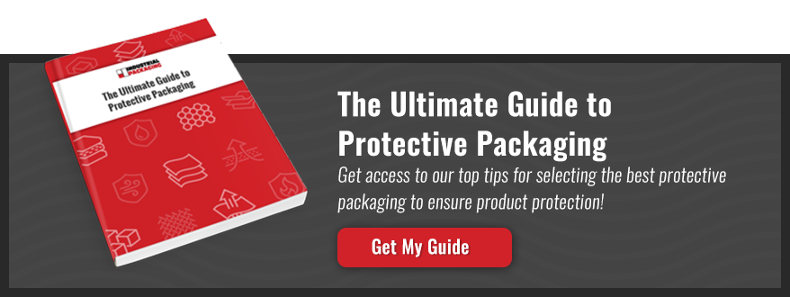7 Things to Keep In Mind When Deciding On Product Packaging Design
Packaging Materials | The Business of Packaging | Plant Performance | Packaging Design | Shipping Protection | Food Packaging | Packaging Psychology
When it comes to packaging design there are a lot of factors that come into play to have a successful product. Product packaging is one of the most important pieces to your brand's success, so it's clearly important to place a high level of planning and thought into your design.
From packaging trends and researching your target market to creating a branding strategy, you've got a lot to review and adjust before you step into production. Each of the items below is just as important as the other in your design process, and is in no particular order. So, let's dive into the top 7 things to keep in mind when you are deciding on a product packaging design.
1. Branding Strategy
First things first, you have to know your product and how it fits in your brand, and you need a solid branding strategy. This is critical to your packaging and can really hurt your brand if it isn't well-planned. Depending on the product you are packaging and your other product lines, is a corporate branding strategy something you should stick with, or should this item be marketed as its own product brand?
Corporate
A few examples of a corporate branding branding strategy include Sony, Apple and IBM. Each of these big brands are well known and trusted for each of their specific product lines, but their products aren't the center of attention as much as their corporation.
If you are selling a line of products that fit under an umbrella like this, where your business is nationally trusted brand (or you would like it to be), choosing a strategy that focuses your design on your business logo and corporate branding may be the best plan.
That is, unless the product you are packaging is truly unique from the other products you offer, or if your brand has a negative public image.
Product
If you are a manufacturer of multiple consumer goods or product lines that aren't directly related to the other, a product branding strategy may be the most logical tactic for your package design.
A few examples of larger brands differentiating their products with product branding strategies include Proctor and Gamble, Kimberly Clark, and Johnson & Johnson. Each of these big name brands hold large shares of products in different consumer goods segments; from health and wellness to grooming and personal care.
However, their products are marketed with product-specific branding that helps them differentiate from their competitors with more flexibility to promote the specific qualities of the product versus focusing on the larger brand.
If you are looking for flexibility in your branding strategy to focus on the product itself, make your packaging design reflect this and keep your overall corporate logo small and out of the center of attention.
2. Production and Time
A factor often overlooked that is critical to the package design is the actual production process. You may have a vision that you aren't easily swayed on until this hits you like a ton of bricks.
Consider the time it may take to create the product and the complexity of the packaging. Include the estimated time it will take to package and prepare for shipment, either in bulk or shipping separately. Review the types of packaging you want to use and the speed at which you and your team will be able get the job done with any options you have.
Discuss production and time with your supplier. If they have a solid understanding of your current/future production floor and of your business they will be invaluable to your planning. They may be able to set up repeat orders or regular check-ins for inventory.
3. Have the Product Help Inspire Your Design
Your product is really the star of the show here, and the packaging it resides in is its ultimate wing-man! Think about the product you are packaging when you are looking for design inspiration. Incorporate the products' colors and textures, and the products intended uses to design a package that really speaks to the product itself.
4. Make Packaging Practical
When you get one of those products that are packaged (trapped) in the completely sealed, need-scissors-to-open package, how does it make you feel? Keep practicality in mind for your packaging! Your consumers will thank you.
Don't go overboard with a packaging design that is completely irregular or hard to handle. Your retailers will also thank you. In some cases, a design that is too different can harm your sales!
This will also help you when you expand your product line, or when demand increases and you need to alter your current production. Think future-forward with your design so the changeover to automation or similar products is easy.
5. Keep Product Protection in Mind
You've got precious cargo to get to the market and off the shelves or into consumers hands! Don't neglect the safety of your products when designing your packaging. If your products are heavy and delicate you may need to review the gauge of films that you use to wrap it for durability and protection when it's being handled.
There are many types of industrial packaging products that provide different types of protection. Things like static protection for your electronics are extremely important for keeping damaged goods to a minimum. Keep tamper evidence for consumer safety in mind as well. You want your product to last throughout its travels until it has completed its lifecycle with the target consume, so protect it strategically!
6. Grab the Consumer's Attention
Remember your target market! You've got to get your products noticed on or off the shelf, and noticed by the right people. Think about the product and who will use it.
What are there general interests? Colors, sports, entertainment, lifestyle, if its a masculine or feminine product, etc.. All of these should be considered as you create a package for your product.
For example: A masculine product may be targeted with rigid designs that are more angular, while a feminine product would be better placed in a curvy, less rigid design that shows off its softer attributes. Make sure that your design aligns with your target market's interests and you will be on your way to a winning package design.
7. Trigger an emotional response
Your packaging should strike a chord with your market. A unique way of doing this with a little psychology in mind is to incorporate an eye-catching design. No, literally. When someone is looking at you that is not in direct eyesight, do you instinctively look towards them as though you could feel it? I know this has happened to me many times and its actually human instinct! Incorporate people into your design to catch the attention of consumers subconsciously.
Another way to do this is to keep your marketing strategy aligned with your packaging! Having an easily-recognizable marketing campaign that includes similar designs, imagery, and messaging can help a consumer remember your brand or product.
There they are, 7 things you should keep in mind when you are creating your next packaging design. Do you have other items that make your checklist when you design for your products? Let me know in the comments below!
Get your free copy of The Ultimate Guide to Protective Packaging here! Loaded with actionable tips and information to improve your product packaging with protection!
About David Roberge
I am grateful to be part of the outstanding Industrial Packaging team. I am able to hang out with some of the most knowledgeable folks in the packaging industry. I feel even luckier that I am able to share that knowledge with you. I love learning, hiking, and growing people and teams both personally and professionally, and helping companies grow better.



